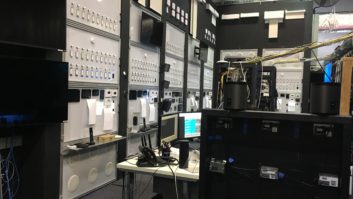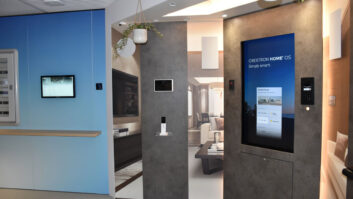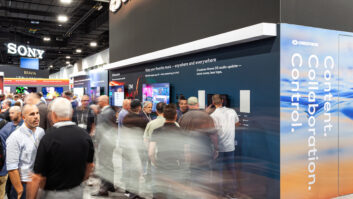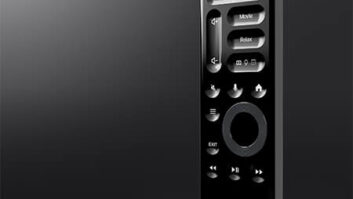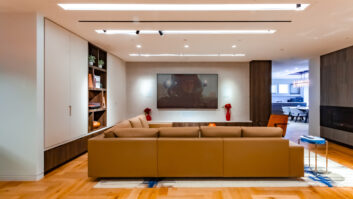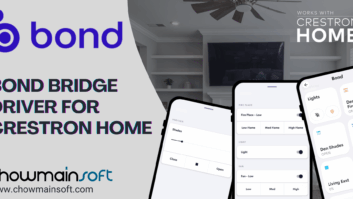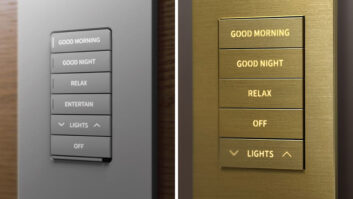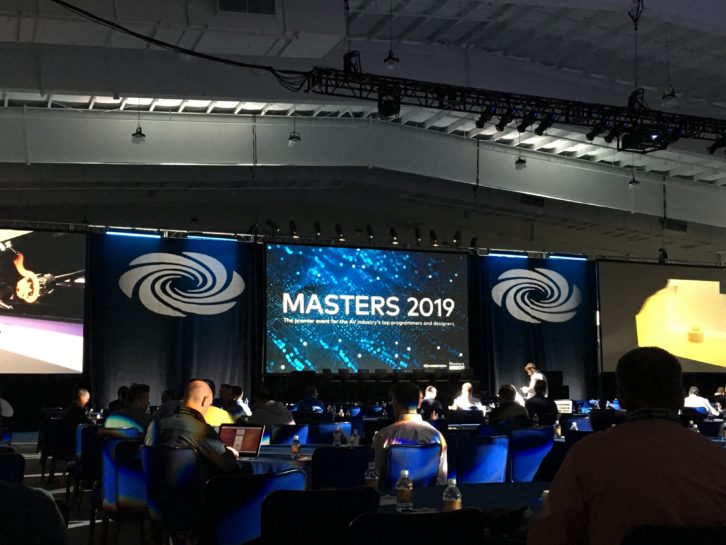
Crestron Masters 2019, held at Mohegan Sun in Connecticut a few weeks ago, brought together residential and commercial integrators for three days of intensive conferences and training programs. The main room, where attendees gathered for the keynote, key sessions, and meals, was vast, yet filled to the limits with those fully invested in Crestron’s platform.
In welcoming attendees, Rich Sasson, global director sales operations for Crestron, explained how Masters has grown since its inception in 1998 to include five different levels of courses, and how the community continues to learn, grow, and share among their peers.
Related: Crestron Expands Masters with More Courses and Tracks
In discussing the Crestron user experience, Sasson said that they goal was to “Wow” users without intimidating them, to improve the perception of AV integration, and to provide a seamless experience. To the programmers in the room, he said he was aware that there is “concern that Crestron is looking to eliminate custom programming, but that is far from the truth. Rest assured that the number of control systems is growing. [Programmers] are our present and our future. The goal is to expand to more markets and bring a more consistent experience.”
Sasson then introduced the keynote speaker for the event, residential and commercial architect and television personality Danny Forster. Forster hosted Build It Bigger on the Discovery channel, and challenged attendees to not just look at a building, but read the building — figure why it looks the way it does; why those choices were made. He gave several intriguing examples of how it could be done, and made my morning walk to my NYC office that much more dangerous as I now try to discern why the structures around me look the way they do instead of watching for oncoming traffic.
“Why do things look the way they look?” posed Forster. “Pressure — the forces of environment or culture. The spaces are tied to a need, and the better we articulate the need, the better the results.”
“Architecture and design moves you — produces an experience,” he added, “Architecture solves problems and makes poetry.” All of which could also be applied to AV integration.
After the keynote, Forster hung around and joined the Diamond Panel along with some of the most experience Crestron programmers in the U.S. The panel covered a number of topics, but, perhaps because of Forster’s presence, spent a good portion of the time discussing how to work with architects and builders.
“When integrators come in too early, it complicates the conversation with the client,” said Forster. “When they come in too late, it prevents some meaningful installations from happening. I am happy to have the integrator be part of the design team, but that has not happened. I want someone to walk in and say, ‘What are we trying to achieve?’ with no vernacular and help find the goals with no preconceived notions.”
“We yield our technical expertise like a weapon,” responded Crestron’s John Ottensen. “We don’t get to see the whole picture, and that is where the gap is. The customer needs to understand from a functional experience perspective so they can use it.”
At the end of the panel, session moderator Jim Pope, the first diamond programmer in Crestron’s Parthenon, made a plea for programmers to stop locking down their interfaces. “The one thing I have seen our industry stuck in is, ‘I didn’t do it, so I won’t fix it,’” he said. “I would like this industry to think more in terms of the open source world. There is enough work to go around, and we don’t have to lock our stuff up. We don’t have to deny our end users that they can transition from one level of tech to another. Do whatever you can for the programmer that will follow you. If we can do that, our users will stop looking at custom programming as something evil.”
For residential integrators, they key takeaway was on Creston Home OS 3, which is due out this summer and received its own session that covered its creation from Pyng OS 1 through its latest iteration. Jason Oster, technology manager, software development platforms for Crestron, demo’d the current version OS 2 and previewed OS 3 for attendees.
He also offered tips on ensuring that your first OS 2 deployment is successful, which included using the resources Crestron provides such as videos on the training portal, contacting sales or technical support, and taking the OS 2/OS 3 online training course. He also recommended checking out the latest list of Crestron drivers, which are updated daily, and contacting a Crestron Home OS 2/OS 3 subject matter expert for help (you could also read Todd Anthony Puma’s hands-on Pyng OS 2 report).
The difference from OS 2 to OS 3 is completely redesigned user interface that is a fully native application, making it run much faster and much more fluid. It also solves some real-world problems by offering quick scene access from the main page for common tasks.
Crestron Custom is not going away, assured Oster, who said that Cresron Home can be customized using HTML5. Additionally, Crestron Certified Driver SDK Devices will allow you to control anything so long as you can write SIMPL#.
And, although OS 3 won’t have these features at launch, Crestron is working to add Apple HomeKit integration and BACnet support to future versions.
The European Creston Masters will take place May 21-23, 2019. For more information on Crestron Masters 2019, visit crestron.com/masters.
